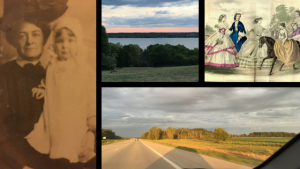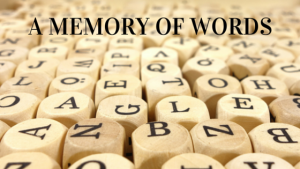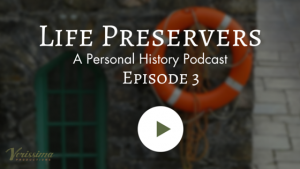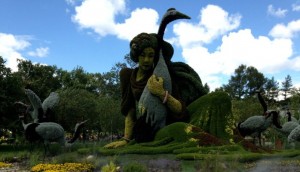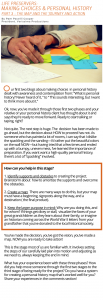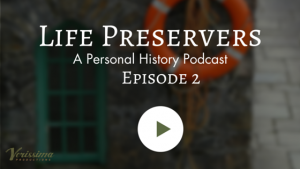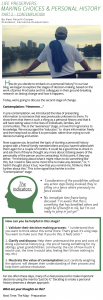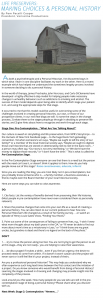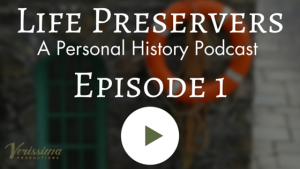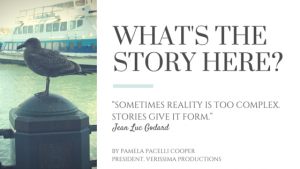By Pam Pacelli Cooper President, Verissima Productions My mother lives in a small, one bedroom apartment on Chicago’s North Side. The one big thing about the apartment is the closets. There are three large ones, and they would be the envy of anyone in the Northeast who lives in a 19th century house designed for wardrobes.[Read More]
Personal History
Brilling and Bedazzled: Creating New Words
By Pam Pacelli Cooper President, Verissima Productions My family of origin adores words. We did crossword puzzles, word games, Boggle and Scrabble when I was growing up. I was lucky enough to meet and marry someone who is also a lexophile. What his family doesn’t do is create words to capture a feeling, an object, or a process[Read More]
Life Preservers Podcast–Episode 3: An Interview with Francie King
A responsibility not “accepted blithely.” Join us as Francie King of History Keep describes her work with personal history clients, drawing on her years of journalism experience. You’ll also encounter treasured letters, Revolutionary War re-enactors, and a magnificent mother as we enter Part 3 of our journey to find the personal stories of personal historians.[Read More]
How We Tell Our Stories
By Pam Pacelli Cooper President, Verissima Productions We tell stories with video and audio. In the personal histories we create we hope to capture the successes and happy moments, but also the moments of pain, mistakes, and repair. If future generations see only the “great” moments of their grandparents’ lives, they may be cowed and dispirited, rather[Read More]
Personal History & Making Choices – Part 3
Life Preservers Podcast – Episode 2: An interview with Leah Abrahams
What do Georges Briard, Gertrude Stein, and a Lutheran fraternal organization have in common? Find out when you listen to our interview with Leah Broyde Abrahams, personal historian. As a subject in our series on getting to know personal historians, Leah describes the path she took to become one, what she has learned, and some insights on why creating[Read More]
Personal History & Making Choices – Part 2
Making Choices & Personal History
Life Preservers Podcast: Episode 1 – An Interview with Marcia Orland
Welcome to the first episode of our new podcast! Each episode of Life Preservers: A Personal History Podcast will feature interviews designed to help you think about personal history–what it is, how to do it, why to do it, and how personal histories create a correspondence with the future. In addition to the interviews, we’ll point[Read More]
